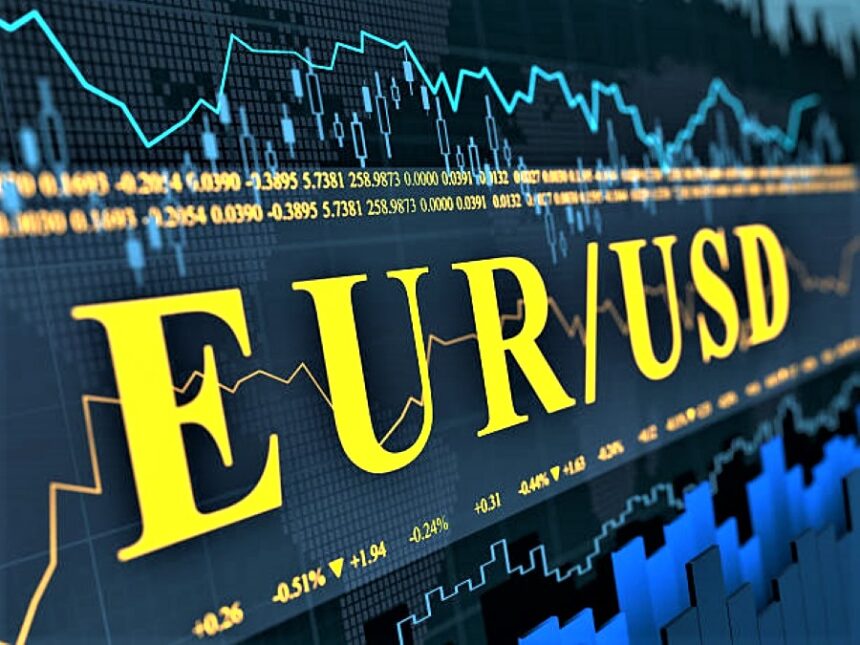EURUSD Flat as Market Waits for Fed Amid Geopolitical Tensions.
The EURUSD pair is trading in a narrow range around 1.1550, unable to find strong direction as geopolitical tensions in the Middle East escalate and traders brace for key monetary policy events. The Euro remains broadly steady despite being pressured by a resurgent US Dollar, which is benefiting from its safe-haven status.
Ongoing military action between Israel and Iran, and mounting speculation that the United States may get involved, have triggered a rise in risk aversion across global markets. Yet, volatility in major assets like the EURUSD remains muted, suggesting traders are in a holding pattern ahead of this week’s critical Federal Reserve policy decision.
Middle East Crisis Adds Fuel to USD’s Safe-Haven Rally
Geopolitical risks intensified this week after Israel and Iran continued exchanging missile fire for a fifth consecutive day. Tensions surged further as Iran threatened a massive retaliatory strike, claiming it would launch the largest missile barrage in history targeting Israel. Meanwhile, Israeli Prime Minister Benjamin Netanyahu issued a chilling warning, threatening the life of Iran’s Supreme Leader, Ali Khamenei.
In response, President Donald Trump cut short his appearance at the G7 summit, returning early to meet the National Security Council and publicly urging US citizens to evacuate Tehran. These actions have raised fears that the US could be drawn into a broader regional war, igniting a wave of risk-off sentiment in financial markets.
While equity markets and risk-sensitive currencies have shown signs of unease, the US Dollar Index (DXY) has climbed slightly above the 98.00 level, recovering from recent multi-year lows. The USD’s safe-haven appeal is once again in the spotlight, as investors seek shelter amid geopolitical uncertainty.
EURUSD Stuck in Triangle Formation as Investors Await Fed Outcome
Despite the backdrop of global turmoil, EURUSD price action remains confined, fluctuating within a small triangle pattern on technical charts. The pair continues to hover around the 1.1550 mark, reflecting the balance between fading Euro strength and moderate Dollar support.
From a technical perspective, the formation suggests a potential breakout may be imminent, but the direction hinges on market-moving events, particularly the outcome of Wednesday’s FOMC meeting.
In the short term, price action will likely remain choppy and range-bound as investors digest incoming headlines from both Washington and the Middle East, along with scheduled economic data from the US and the Eurozone.
Fed to Hold Rates, But Eyes on Economic Projections and Dot Plot
The Federal Reserve’s policy decision on Wednesday is expected to be the highlight of the week for financial markets. Analysts broadly agree that the Fed will hold interest rates steady in the 4.25%-4.5% range, continuing its cautious stance amid mixed economic signals.
However, what could jolt currency markets is the release of the Summary of Economic Projections (SEP) and the all-important dot plot, which reflects individual policymakers’ interest rate expectations for the coming quarters.
Earlier this year, the dot plot indicated two rate cuts were likely in 2025, but persistent inflation and signs of labor market resilience have complicated the picture. The latest CPI data, while softer, hasn’t provided clear confirmation of disinflationary momentum. If the Fed revises its projections upward — for either inflation or fewer rate cuts — it could lend further support to the US Dollar, pressuring EUR/USD lower.
US Economic Data Offers Mixed Signals Ahead of Fed
Adding to the uncertainty, Monday’s release of the New York Fed Manufacturing Index for June showed a steep drop to -16, significantly worse than expectations for a moderate improvement. This reflects deteriorating business sentiment in the manufacturing sector, likely driven by ongoing tariff pressures and global trade disruptions.
Looking ahead, Tuesday’s focus will shift to the US Retail Sales report for May, where economists anticipate a 0.7% decline, following a meager 0.1% gain in April. A sharp contraction in retail activity would reinforce fears that the US consumer is weakening, adding to the pressure on the Fed to consider easing policy sooner.
Still, the broader macroeconomic picture remains clouded by geopolitical headlines, which are currently the dominant driver of short-term price action.
Euro Shows Resilience Against Pound But Lags Commodity Currencies
According to the latest currency performance heatmap, the Euro has shown modest gains against the British Pound but has underperformed against high-yielding currencies like the Australian Dollar (AUD) and the New Zealand Dollar (NZD).
Here’s a snapshot of how the Euro performed today against key peers:
- EUR/USD: -0.05%
- EUR/GBP: +0.04%
- EUR/JPY: 0.00%
- EUR/CAD: -0.09%
- EUR/AUD: -0.24%
- EUR/NZD: -0.23%
- EUR/CHF: -0.20%
This mixed performance reflects broader market dynamics, where risk-sensitive commodity currencies are rallying modestly on expectations of rate stability and signs of China’s industrial recovery, while safe-havens like the Swiss Franc and the Yen remain in demand amid geopolitical risks.
ZEW Sentiment Survey Likely to Be Overshadowed by War Headlines
In the European calendar, the German ZEW Economic Sentiment Survey is due Tuesday. Analysts expect a minor improvement in sentiment for June, but the data is unlikely to shift the needle for the Euro. Investor focus remains centered on external shocks, particularly the Middle East situation and upcoming Fed projections.
Unless the ZEW survey delivers a massive upside surprise, any reaction in EURUSD will likely be muted, with price action continuing to take cues from US political developments and risk sentiment.
Technical Outlook: EURUSD Needs a Break Above 1.1580 or Below 1.1500
From a charting perspective, EURUSD remains trapped within a tight consolidation pattern. Immediate resistance lies near the 1.1580 level, followed by a more significant barrier around 1.1610, which marked the recent high.
On the downside, strong support appears at 1.1500, followed by 1.1465, where the 50-day moving average intersects. A sustained break below that level could trigger a slide toward the 1.1400 zone, especially if geopolitical tensions escalate further or the Fed adopts a more hawkish tone.
Momentum indicators like the Relative Strength Index (RSI) are neutral, offering no clear directional bias. As such, event risk will likely dictate the next big move.
Key Takeaways
- EURUSD remains range-bound around 1.1550 amid heightened geopolitical tensions and cautious Fed expectations.
- US Dollar is firming as investors seek shelter in safe-haven assets due to escalating Israel-Iran conflict.
- Fed policy decision and dot plot revisions will be crucial for EURUSD direction this week.
- US Retail Sales and NY Fed Index signal a cooling economy, adding complexity to the Fed’s path.
- Technical picture shows a triangle pattern, with breakouts likely to follow after the Fed meeting.
[faq-schema id=”39932″]









